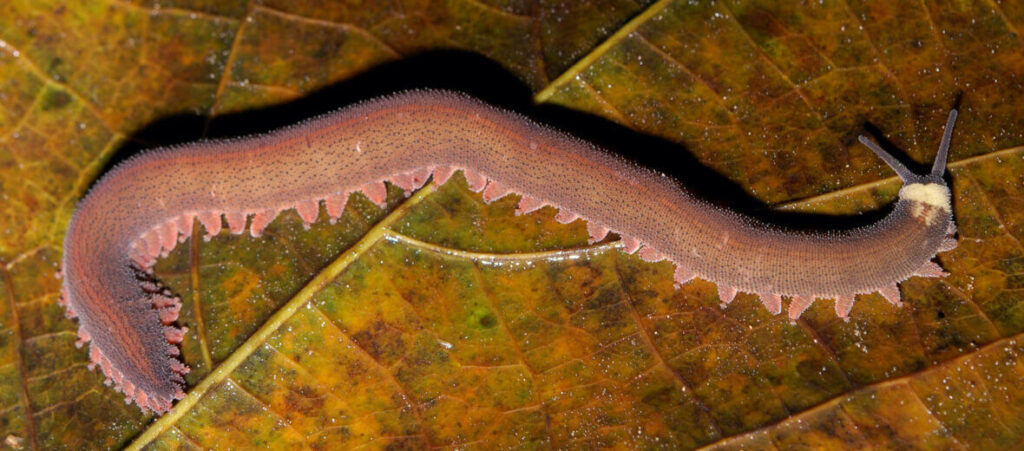Even though we can’t see the changes, all species in Australia including long-lived animals and plants are still evolving. The “living fossils” in Australia that are listed below are not exact windows into the past. However, they have endured massive extinctions, a catastrophic comet impact, and numerous ice ages while maintaining a similar appearance to that of their ancestors millions of years ago.
Wollemi Pine

Before 1994, Wollemia trees were only known from fossils, some of which date back 200 million years. Then, in a lonely valley in the Wollemi National Park, northwest of Sydney, National Parks, and Wildlife Services officer David Noble discovered peculiar trees. They resembled fossil Wollemia, making them alive-and-well dinosaur relics. For the sake of the species protection, the location of the severely endangered wild population is kept a secret, but commercially grown trees are now available.
Queensland Lungfish

Queensland Lungfish in Australia is one of long-lived animals around the world. Lungfish have been around for at least 380 million years, and fossil evidence suggests the Queensland type hasn’t evolved much throughout that time. The Mary and Burnett river systems in southeast Queensland are home to this long-bodied, olive-brown fish with paddle-like tails, but they have been introduced elsewhere. While most fish only breathe through their gills, lungfish additionally have a lung that allows them to breathe air at the water’s surface.
Broadgilled Hagfish

Hagfish are ocean-dwelling fish, and the only species that lives in Australian waters is this one, which may be found off the east coast. It oozes huge amounts of slime from its skin, just like other hogfish, which jams the gills of predators and lets the fish escape. Although only one fossilized hagfish has been discovered, it is remarkably similar to living hagfish. Many traits of fish from 300 million years ago still exist in modern fish.
Idiot Fruit Tree – Australian Toxic Living Fossil

Scientists discovered that the cattle who were abruptly killed in 1970 while grazing near Cairns had consumed a toxic fruit. It was found to be the last surviving member of a group that existed 120 million years ago, during the time when flowering plants first appeared. The Green Dinosaur moniker for the stupid fruit tree, also known as ribbonwood, comes from its long evolutionary history. Its toxicity may account for why it is restricted to a small number of lowland woodland areas. The theory holds that the tree may rely on gravity – rather than animals – to disperse its seeds.
Creeping Strawberry Pine

Tasmania is a conifer hotspot and a significant haven for Gondwanan remnants, including the unassuming plant known as the creeping strawberry pine and its vivid red edible fruit. According to fossilized leaves from New Zealand that are 20 million years old and pollen grains that are 150 million years old, this pine’s near cousins were previously widespread throughout the Southern Hemisphere. It is now the lone survivor of its family and can only be found in Tasmania’s harsh mountains.
Mountain Shrimp

The mountain shrimp is another Gondwanan relic that can be found in Tasmania’s Lake St. Clair. This crab is unique to the island state, where it can be found in abundance in 300-meter-high lakes and creeks. Mountain shrimp mimic marine fossils that date back 250 million years. By 220 million years ago, they had adapted to freshwater settings, as shown by fossil shrimp found in NSW lake silt that resembles their contemporary Tasmanian counterparts.
Related post 5 of Australia’s Most Scary Inhabitants
Australian Ghost Shark

In 2014, researchers examined the ghost shark’s DNA and found that its genome has essentially not changed in 420 million years. The strange-looking animal presently holds the distinction of “slowest-evolving vertebrate” that we are aware of. It has a snout that resembles a trunk that it uses to scan the ocean floor in search of shellfish. This is not a genuine shark, despite its common moniker. It belongs to the family of cartilaginous fish known as chimeras, which split off from sharks and rays 420 million years ago.
Velvet Worms – Australian Solitary Living Fossil

The 74 species of velvet worm found in Australia are descended from a primitive lineage that dates back half a billion years. They are solitary creatures that resemble caterpillars and waddle through the wet undergrowth of forests, capturing prey with jets of gooey slime. Fossils are uncommon; however, examples have been discovered in sediments and amber that are 300 million years old and 40 to 30 million years old, respectively. The closest living relative of the strictly terrestrial velvet worms of today, which are marine dwellers, was discovered in a deposit that dates back 500 million years to the time when the earliest animals started to colonize the earth.
Pig-nosed Turtle

Pig-nosed Turtle in Australia is one of long-lived animals around the world. The Carettochelyidae family of pig-nosed turtle fossils, which date to the Eocene (56-33.9 million years ago), are found all over the world. There is currently only one species left, and it is restricted to isolated rivers in NT and New Guinea. Because it lives in rivers but has flippers shaped like paddles, this ancient soft-shelled turtle is seen as an evolutionary connection between freshwater and marine turtles.
Stromatolites – Australian Oldest Known Living Fossil

Stromatolites are inconspicuous stone clusters that conceal an extraordinary history, making them an essential component of any list of Australian living fossils. Stromatolites are among the oldest known living entities and are made up of multilayer mats of cyanobacteria. Their fossil record dates to the beginning of life, 3.7 billion years ago. Up until 1961, they were only known from old fossils, which were found at Shark Bay in WA. Stromatolites had a major role in the development of life on Earth. These structures are made of tiny photosynthetic bacteria, which released so much oxygen that it changed the Earth’s atmosphere and allowed for the emergence of more complex living forms.
Read more If You Like Australian Wildlife Then You Can’t Miss This List
